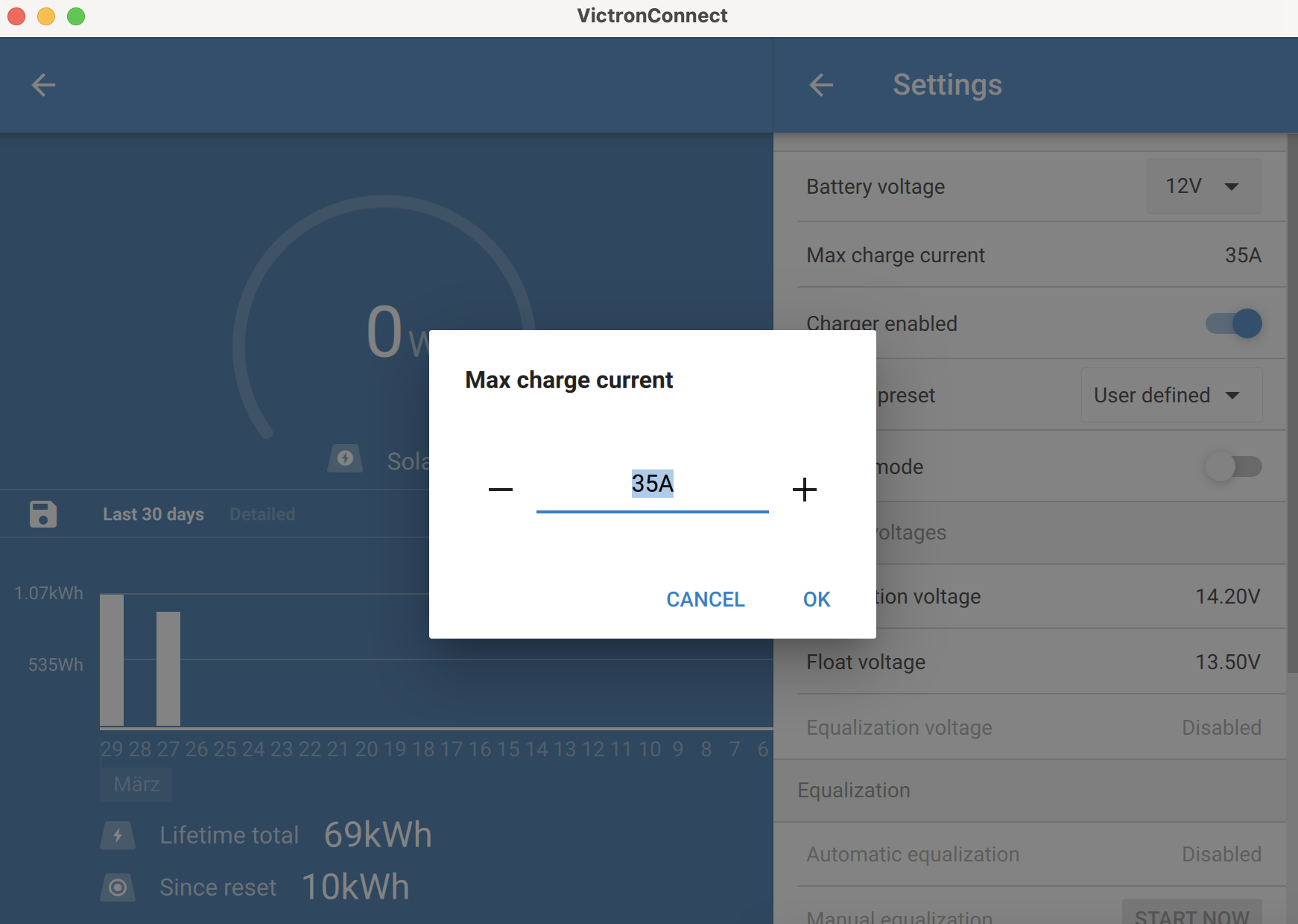Hello,
Recently I recabled all my solar system (I moved it somewhere else) and today I was looking at the system and the batteries were deeply bulged, hot on touch, and I would have expected them to explode.
The battery is a 48V 220Ah Victron AGM charged by two 150/35 MPPT chargers.
The current state of charge is 100% and the battery voltage is 52V once I cut all the breakers.
I expect the batteries to be dead now, but I need to know what caused this to avoid repeating the same mistake twice. Today is a sunny day and I expect that the MTTP overcharged the batteries. What I don't understand is why.
Could it be the battery wiring that induced a small resistance causing a voltage drop and causing the MPPT to think the battery voltage to be lower than actual?
There is also something fishy about the circuit breaker of the batteries. I still read just above 1V after the breaker when the breaker is on the OFF position. But I disconnected it and checked the resistance and it seemed to work correctly, also when ON, the breaker does not cause a voltage drop or anything. Perhaps there is a device on the other side of the breaker, a small capacity that causes this...

Also, now, the batteries are arranged a bit differently and there is less space around them. Could it be that they went too hot in their new environment and did not cope with that ? I arranged insulation around them but perhaps the insulated box is now too small and head dissipation could not happen correctly, is that enough to cause this kind of damage?

